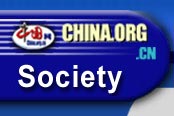 China has taken the world lead in the industrialized production of soybean protein fibre. The scientific and technological achievement has made great strides in the chemical synthetic fibre sector for which China has had no originally - developed technology in the past. Current research has made a profound impact on the direction of new fibre development.
China has taken the world lead in the industrialized production of soybean protein fibre. The scientific and technological achievement has made great strides in the chemical synthetic fibre sector for which China has had no originally - developed technology in the past. Current research has made a profound impact on the direction of new fibre development.
Ji Guobiao, senior textile researcher from the China Academy of Engineering, indicated that after 100 years' development, synthetic fibres have become a mature textile material for the 20th century and today there are chemical fibres with unique properties. Chemical fibres have become a major raw material for the textile industry in the world. But, chemical fibres in the 20th century have three limitations: 1) They rely on crude oil resource which is close to being depleted; 2) many of chemical fibres pollute the environment during their production; and 3) the texture of synthetic fibres does not have the same texture of that of natural fibres. After researching the development of new fibre materials in industrialized countries, Ji concluded that the new fibre of the new century is the result of comprehensive research that combines both the traditional branches of learning with new branches of learning such as information engineering, material engineering and bio-engineering. To avoid the limitations of chemical synthetic fibers widely used today in the textile industry, the new fibre should have the following characteristics: 1) it should be developed from low cost natural resources (i.e. agriculture, husbandry ad forest sectors) instead of heavily relying on crude oil; 2) its production process should be clean and environmentally friendly; and 3) it should be comfortable to the skin of human beings.
At present, only industrialized countries have invested heavily in developing new fibres for the new century. It is learned that the United States plans to invest US$60 billion to realize the industrialized production of poly-lactic acid fibre. The main raw material of poly-lactic acid is cornstarch and various forms of cellulose. After fermention, the raw materials produce lactic acid that becomes poly-lactic acid after being purified and synthesized. Poly-lactic acid fibre neither relies on crude oil nor pollutes the environment during production.
THE HEALTHY AND COMFORTABLE FIBRE OF THE 21ST CENTURY
Moreover, the fibre also has the characteristic of bio-degrading. Although still at the early stages of production, poly-lactic acid fibre or Tian Rong is praised as the "new fibre of the 21st century".
European companies have invested US$100 million and spent ten years in the successful development of what is termed "Heavenly Silk". Just like adhesive fibre, "Heavenly Silk" is a type of cellulose synthetic fibre. The fibre has been called ``environment friendly'' fibre because of the fact that its production technique reduces environmental pollution unlike that of adhesive fibre.
Japanese scientists have successfully used New Zealand milk for the industrial production of milk fibre. However, the high price of over 700,000 yuan per ton has restrained its marketing promotion.
The development of soybean protein fibre reflects the direction of the development of new fibre in the new century. Soybean fibre is developed from bean dregs or residue from beans after making soybean oil. Each ton of soybean dregs can produce 400 kg of globulin. After globulin is engrafted, copolymerized and mixed with high polymer, the soybean fibre is spun from the material. In addition to its absorbing and releasing moisture, it can dually provide ventilation and warmth. Soybean protein fibre’s spinning properties rivals those of natural fibres such as silk, cotton and wool. Given its unique qualities, soybean protein fibre is the ideal material for the manufacturing of high-grade cloth and garments. "Tian Rong" has been praised locally and internationally by industry experts as the "healthy and comfortable fibre of the new century."
(China Radio International10/17/2001)
